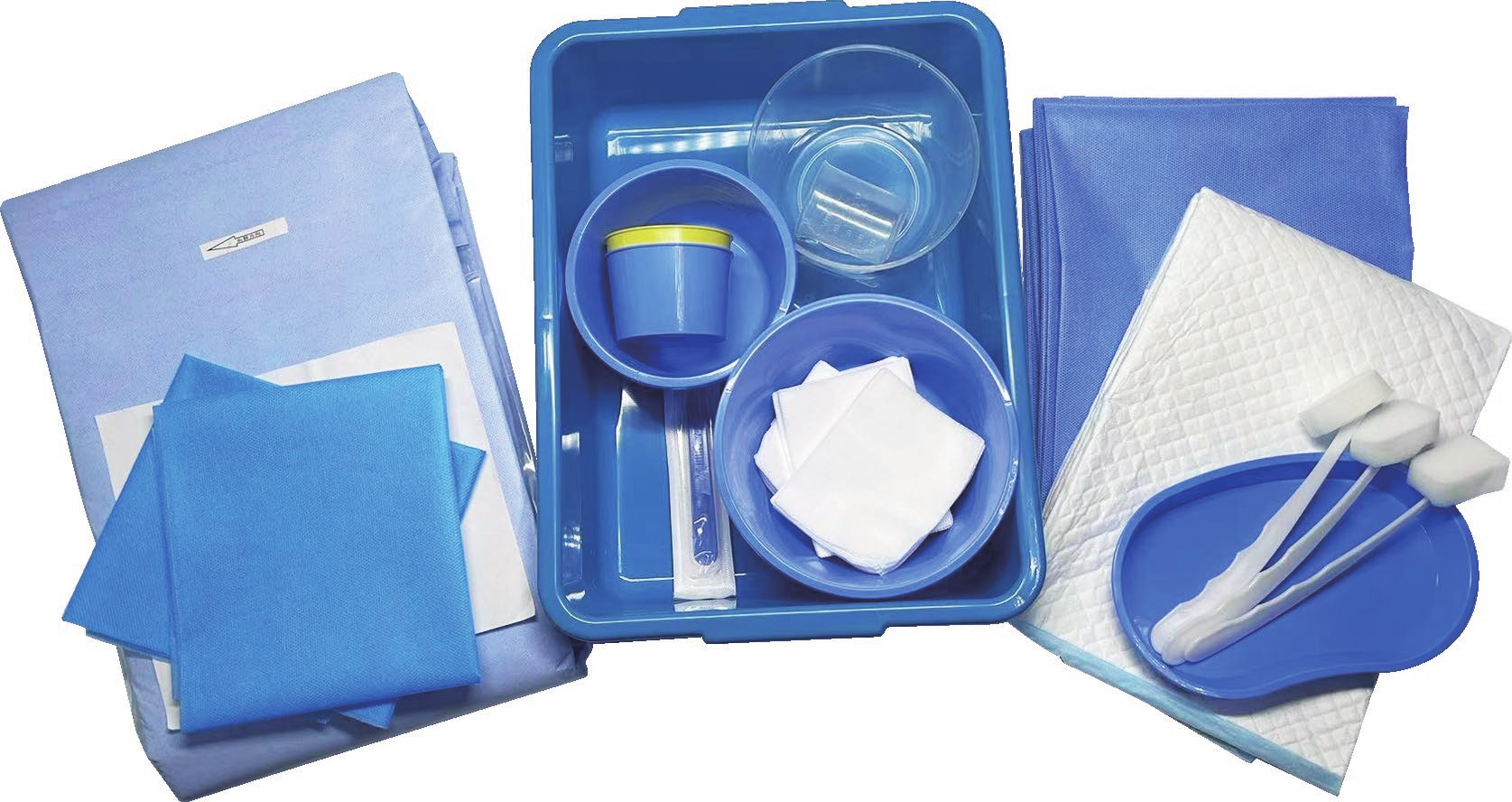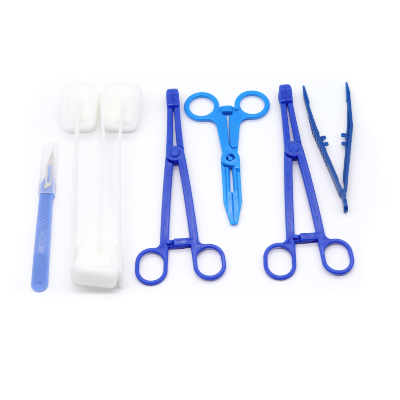Essential Components of Modern Surgical Response Equipment
Healthcare professionals know that being prepared for surgical interventions requires meticulous organization and immediate access to critical tools. A well-stocked surgical intervention bag serves as a mobile lifeline, enabling medical teams to respond swiftly and effectively to various surgical scenarios. Understanding the crucial elements that belong in this vital piece of equipment can mean the difference between life and death in emergency situations.
Modern surgical intervention bags have evolved from simple carrying cases to sophisticated, organized systems that maintain sterility while providing quick access to essential instruments. These bags are designed with multiple compartments, clear labeling, and logical arrangements that allow healthcare providers to locate and retrieve items quickly under pressure.
Primary Surgical Instruments and Tools
Critical Cutting and Clamping Instruments
At the heart of every surgical intervention bag are the fundamental cutting and clamping tools. Surgical scissors, including both straight and curved varieties, are essential for precise tissue manipulation. High-quality hemostats and various types of clamps must be readily available for controlling bleeding and securing tissues. These instruments should be crafted from surgical-grade stainless steel to ensure durability and proper sterilization.
The selection must include different sizes of forceps, ranging from delicate tissue forceps to more robust handling instruments. Each tool serves a specific purpose, and their arrangement within the surgical intervention bag should follow a logical order that mirrors the typical progression of surgical procedures.
Specialized Surgical Equipment
Beyond basic instruments, specialized tools are crucial for specific surgical scenarios. This category includes retractors of various sizes, surgical probes, and specialized scissors for different tissue types. Vascular clamps and fine-tipped instruments for delicate procedures should also be included, carefully organized in dedicated compartments.
Modern surgical intervention bags often incorporate space for powered instruments and their backup batteries. These might include surgical drills, specialized cutting tools, or cautery devices, depending on the intended use and specialty of the medical team.

Essential Disposable Supplies
Sterile Dressing Materials
A comprehensive selection of sterile dressing materials is vital for wound management and surgical site care. This includes various sizes of gauze, adhesive dressings, and specialized wound-care products. The surgical intervention bag should contain multiple sterile drapes and surgical towels to establish and maintain a sterile field in any setting.
Advanced wound care products, such as hemostatic dressings and antimicrobial-impregnated materials, provide additional options for complex wound management. These materials should be organized in easily accessible, clearly marked sections of the bag.
Disposable Surgical Supplies
Single-use items form a crucial component of the surgical intervention bag's inventory. This includes sterile gloves in various sizes, surgical masks, protective eyewear, and disposable surgical gowns. Suture materials of different sizes and types, along with appropriate needles, must be readily available and properly organized.
The bag should also contain a selection of catheters, drainage tubes, and collection systems. These items need to be stored in a way that maintains their sterility while allowing quick access during procedures.
Monitoring and Diagnostic Equipment
Vital Signs Monitoring Devices
Modern surgical intervention bags incorporate space for compact yet sophisticated monitoring equipment. This includes portable vital signs monitors, pulse oximeters, and blood pressure measurement devices. These instruments should be protected within padded compartments while remaining easily accessible.
Battery-powered diagnostic tools, such as point-of-care testing devices and portable ultrasound units, may also be included depending on the specific requirements of the medical team. Regular maintenance and battery checks are essential to ensure these devices are ready for immediate use.
Emergency Response Tools
Every surgical intervention bag must contain equipment for managing emergency situations. This includes airway management tools, emergency medications, and resuscitation equipment. The organization of these items should follow a systematic approach that allows for rapid deployment in critical situations.
Documentation tools, including surgical procedure logs and patient assessment forms, should also be included. Many modern bags incorporate digital devices or specialized compartments for electronic documentation systems.
Infection Control and Safety Measures
Personal Protective Equipment
Maintaining proper infection control requires a comprehensive selection of personal protective equipment (PPE). The surgical intervention bag should contain multiple sets of sterile gowns, gloves, masks, and eye protection. These items need to be easily accessible while maintaining their protective integrity.
Additional safety equipment might include specialized protective gear for specific hazards, such as radiation protection or chemical-resistant materials. The organization of PPE should allow for proper donning sequence and quick access during emergency situations.
Sterilization and Cleaning Supplies
To maintain sterility and prepare for subsequent uses, the surgical intervention bag should include basic sterilization and cleaning supplies. This includes antiseptic solutions, sterilizing wipes, and materials for preliminary cleaning of reusable instruments. Proper containment systems for used sharps and contaminated materials are essential.
Documentation of sterilization procedures and maintenance logs should be maintained within a designated section of the bag. This ensures compliance with infection control protocols and maintains the integrity of the surgical equipment.
Frequently Asked Questions
How often should a surgical intervention bag be inspected and restocked?
A surgical intervention bag should undergo thorough inspection at least weekly, with immediate restocking after each use. Regular inventory checks ensure all supplies are within their expiration dates and equipment is in proper working order. Many facilities implement daily quick checks and monthly detailed audits.
What are the essential maintenance procedures for surgical intervention bags?
Essential maintenance includes regular cleaning of the bag itself, checking integrity of all compartments, verifying functionality of equipment, and ensuring proper organization of contents. Regular testing of electronic devices, inspection of instrument quality, and validation of sterile packaging integrity are crucial components of maintenance protocols.
How should temperature-sensitive items be stored in a surgical intervention bag?
Temperature-sensitive items should be stored in specialized insulated compartments or separate temperature-controlled units. Regular temperature monitoring and proper rotation of these items is essential. Some modern surgical intervention bags include built-in temperature monitoring systems for sensitive supplies.
What documentation should accompany a surgical intervention bag?
Essential documentation includes inventory lists, equipment maintenance logs, sterilization records, and usage tracking forms. Emergency protocols, quick-reference guides, and relevant certification documents should also be readily available. Digital documentation systems are increasingly being integrated into modern surgical response equipment management.

